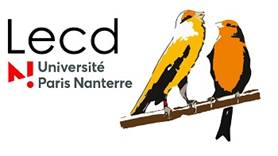Alice Araguas
PHD STUDENT
Supervision: Sébastien Derégnaucourt & Bahia GuellaïPhone: +33 1.40.97.47.86
Mail: alice.araguas@parisnanterre.fr
Funding 2018-2021
Ecole Doctorale 139 : Connaissance, Langage, ModélisationUniversité Paris Nanterre

COLLABORATIONS
Institut des Systèmes Intelligents et de Robotique, Sorbonne Université
Laboratoire des Equipes Traitement de l'Information et Systèmes, Université Cergy-Pontoise
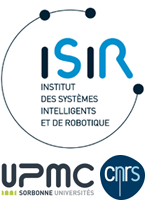
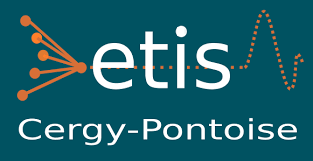
RESEARCH INTEREST
[english version]
Use of robots in learning: comparative study between Children and Zebra Finches
Understanding the origins of language is a challenge both in human sciences and evolutionary biology. Language is thought to be a uniquely human trait, but vocal learning is one component of language shared with other species, such as the Zebra Finch (Taeniopygia guttata). Young male birds of this species learn their own song early in life by imitating their father’s song. In a laboratory setting, the best way to capture this song imitation phenomenon is to expose a young male to an adult male. Inducing this relationship provides a reference from which to explore the neurobiological aspects of song learning in birds. However, this method does not enable precise control of the many variables involved in song learning. It is for this reason that we propose to use robotics to explore the multimodal aspects of song learning. This project will focus on two main questions: 1. Can a robot-bird be an effective song tutor for young birds? 2. What is the importance of vocal and physical interactions in song learning for Zebra Finches?
In addition, robots are becoming more and more present in our daily human lives. Recently, robots have been used in educational contexts with children (particularly children with Autism Spectrum Disorder (ASD)). As robots are attractive, predictable and easy to understand, they could potentially foster the involvement of children in learning tasks. In this additional part of our study, we will assess the learning abilities of children, examining any differences based on whether the tutor is a human adult, or a humanoid robot called “Nao”.
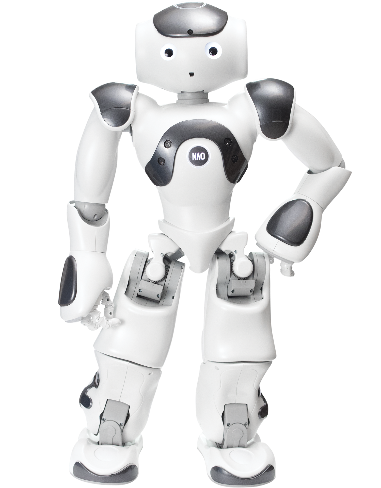
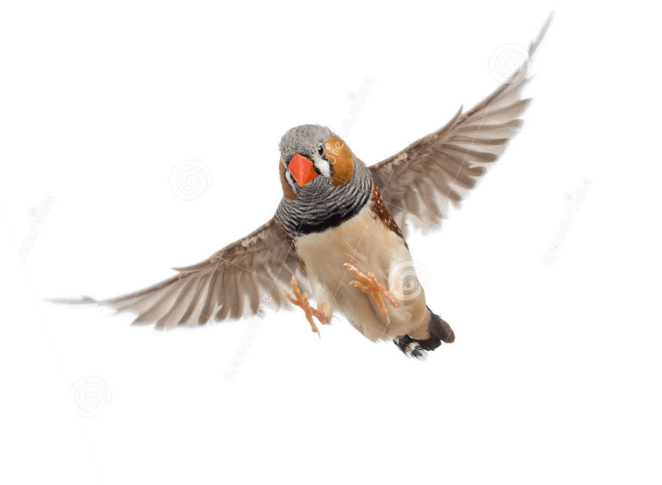
Robot Nao – © SoftBank Robotics
[version française]
Utilisation des robots pour l'apprentissage : une étude comparative chez l'enfant et le Diamant Mandarin
Comprendre les origines du langage est un défi en sciences humaines et en biologie évolutive. Si le langage est un attribut humain, une de ses composantes - l'apprentissage vocal - est partagée avec d'autres espèces, dont le Diamant Mandarin (Taeniopygia guttata). Chez cette espèce d’oiseau, les jeunes mâles apprennent à chanter précocement durant leur vie, en imitant principalement le chant de leur père. En laboratoire, la meilleure façon d’obtenir une copie fidèle du chant consiste à placer un jeune mâle en présence d’un mâle adulte. Cette relation jeune-adulte constitue ainsi une référence pour explorer les aspects neurobiologiques de l’apprentissage du chant chez les oiseaux. Cependant, cette méthode ne permet pas un contrôle précis des différentes variables impliquées dans l’apprentissage du chant. Nous proposons ainsi d’utiliser la robotique pour explorer les aspects multimodaux de l’apprentissage du chant chez le Diamant Mandarin. Ce projet s’articulera autour des questions suivantes : 1) un robot-oiseau peut-il être considéré comme un tuteur de chant pour de jeunes Diamants Mandarins ? 2) Quelle est l’importance de l’interaction vocale et physique dans l’apprentissage du chant chez le Diamant Mandarin ?
Par ailleurs, les robots occupent une place de plus en plus importante dans nos sociétés, nous amenant à interagir avec eux au quotidien. Chez l’enfant, leur utilisation a récemment été proposée dans des contextes éducatifs, notamment auprès d’enfants présentant un Trouble du Spectre de l’Autisme (TSA). Le robot, par son caractère attractif, prévisible et simple à décrypter, favoriserait l’engagement des enfants dans des tâches d’apprentissage. Nous comparerons ainsi dans notre étude les capacités d’apprentissage d’enfants avec et sans TSA selon que le tuteur est un adulte ou le robot humanoïde Nao.
Use of robots in learning: comparative study between Children and Zebra Finches
Understanding the origins of language is a challenge both in human sciences and evolutionary biology. Language is thought to be a uniquely human trait, but vocal learning is one component of language shared with other species, such as the Zebra Finch (Taeniopygia guttata). Young male birds of this species learn their own song early in life by imitating their father’s song. In a laboratory setting, the best way to capture this song imitation phenomenon is to expose a young male to an adult male. Inducing this relationship provides a reference from which to explore the neurobiological aspects of song learning in birds. However, this method does not enable precise control of the many variables involved in song learning. It is for this reason that we propose to use robotics to explore the multimodal aspects of song learning. This project will focus on two main questions: 1. Can a robot-bird be an effective song tutor for young birds? 2. What is the importance of vocal and physical interactions in song learning for Zebra Finches?
In addition, robots are becoming more and more present in our daily human lives. Recently, robots have been used in educational contexts with children (particularly children with Autism Spectrum Disorder (ASD)). As robots are attractive, predictable and easy to understand, they could potentially foster the involvement of children in learning tasks. In this additional part of our study, we will assess the learning abilities of children, examining any differences based on whether the tutor is a human adult, or a humanoid robot called “Nao”.


Robot Nao – © SoftBank Robotics
[version française]
Utilisation des robots pour l'apprentissage : une étude comparative chez l'enfant et le Diamant Mandarin
Comprendre les origines du langage est un défi en sciences humaines et en biologie évolutive. Si le langage est un attribut humain, une de ses composantes - l'apprentissage vocal - est partagée avec d'autres espèces, dont le Diamant Mandarin (Taeniopygia guttata). Chez cette espèce d’oiseau, les jeunes mâles apprennent à chanter précocement durant leur vie, en imitant principalement le chant de leur père. En laboratoire, la meilleure façon d’obtenir une copie fidèle du chant consiste à placer un jeune mâle en présence d’un mâle adulte. Cette relation jeune-adulte constitue ainsi une référence pour explorer les aspects neurobiologiques de l’apprentissage du chant chez les oiseaux. Cependant, cette méthode ne permet pas un contrôle précis des différentes variables impliquées dans l’apprentissage du chant. Nous proposons ainsi d’utiliser la robotique pour explorer les aspects multimodaux de l’apprentissage du chant chez le Diamant Mandarin. Ce projet s’articulera autour des questions suivantes : 1) un robot-oiseau peut-il être considéré comme un tuteur de chant pour de jeunes Diamants Mandarins ? 2) Quelle est l’importance de l’interaction vocale et physique dans l’apprentissage du chant chez le Diamant Mandarin ?
Par ailleurs, les robots occupent une place de plus en plus importante dans nos sociétés, nous amenant à interagir avec eux au quotidien. Chez l’enfant, leur utilisation a récemment été proposée dans des contextes éducatifs, notamment auprès d’enfants présentant un Trouble du Spectre de l’Autisme (TSA). Le robot, par son caractère attractif, prévisible et simple à décrypter, favoriserait l’engagement des enfants dans des tâches d’apprentissage. Nous comparerons ainsi dans notre étude les capacités d’apprentissage d’enfants avec et sans TSA selon que le tuteur est un adulte ou le robot humanoïde Nao.
Communications
Publications
Lorenzi, M.C., Araguas, A., Bocquet, C., Picchi, L., & Ricci-Bonot, C. 2018. Courtship behavior as a war of attrition in a simultaneous hermaphrodite. Animal Biology.
Lescher, A. 2018. Contribution de la psychomotricité à l’accompagnement de personnes transidentitaires. E. W. Pireyre (Ed.), 19 situations cliniques en psychomotricité. pp. 258-271. Paris: Dunod
Oral communications
Lescher, A., Boulon, S. & Grabot, D. 2014. Les Entretiens de Bichat en psychomotricité. Approche psychomotrice de la problématique du sujet transsexuel. Les Entretiens de Bichat en psychomotricité, Septembre 2014. Paris, France.
Posters
Araguas, A., Le Maguer, L., Geberzahn, N., Guellaï, B. & Derégnaucourt, S. Apprentissage social et signature vocale chez le Diamant Mandarin (Taeniopygia guttata). 48ème colloque annuel de la SFECA, juin 2018. Rennes, France.
Lorenzi, M.C., Araguas, A., Bocquet, C., Picchi, L., & Ricci-Bonot, C. 2018. Courtship behavior as a war of attrition in a simultaneous hermaphrodite. Animal Biology.
Lescher, A. 2018. Contribution de la psychomotricité à l’accompagnement de personnes transidentitaires. E. W. Pireyre (Ed.), 19 situations cliniques en psychomotricité. pp. 258-271. Paris: Dunod
Oral communications
Lescher, A., Boulon, S. & Grabot, D. 2014. Les Entretiens de Bichat en psychomotricité. Approche psychomotrice de la problématique du sujet transsexuel. Les Entretiens de Bichat en psychomotricité, Septembre 2014. Paris, France.
Posters
Araguas, A., Le Maguer, L., Geberzahn, N., Guellaï, B. & Derégnaucourt, S. Apprentissage social et signature vocale chez le Diamant Mandarin (Taeniopygia guttata). 48ème colloque annuel de la SFECA, juin 2018. Rennes, France.
Former research topics
Second year of Master’s degree. Vocal signature and social learning: a comparative study between children and zebra finches, under the supervision of Sébastien Derégnaucourt & Bahia Guellaï.
First year of Master’s degree. Agonistic behaviors and mating in a hermaphroditic worm, Ophryotrocha diadema, under the supervision of Maria Cristina Lorenzi.
Bachelor’s degree. Psychomotor therapy with transgender people, under the supervision of Denis Grabot & Sophie Boulon.
First year of Master’s degree. Agonistic behaviors and mating in a hermaphroditic worm, Ophryotrocha diadema, under the supervision of Maria Cristina Lorenzi.
Bachelor’s degree. Psychomotor therapy with transgender people, under the supervision of Denis Grabot & Sophie Boulon.
Teaching
Travaux Dirigés en Neuroanatomie (L2)
Mis à jour le 15 juillet 2019












